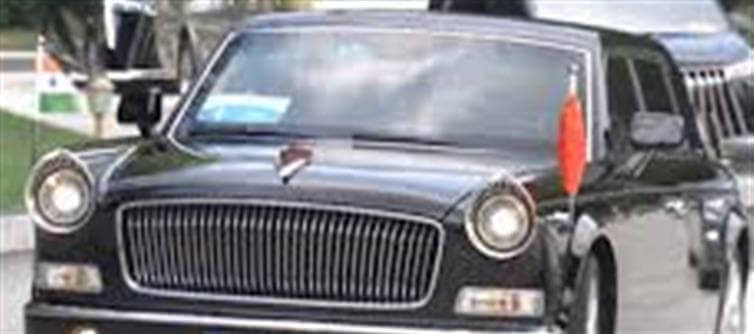
During his recent visit to china for the Shanghai Cooperation Organisation (SCO) Summit, Prime Minister Narendra Modi rode in China’s prestigious Hongqi L5 limousine. This car is not just any vehicle—it’s the state car of President Xi Jinping and is reserved for China’s top leaders and select foreign dignitaries. Here’s everything you need to know about this iconic car brand.
1. What Is Hongqi? The “Red Flag” of China
Hongqi, pronounced Hong-chi, translates to “Red Flag” in Mandarin. Launched in 1958 by the state-owned First Automobile Works (FAW) Group, it is China’s oldest passenger car brand. Hongqi was designed as a national luxury symbol, exclusively for Communist party leaders.
Originally produced only for elite officials, production stopped in 1981 but was revived in the mid-1990s.
Today, the L5 limousine is Hongqi’s flagship model and the most recognizable symbol of Chinese prestige.
2. Design and Features of the Hongqi L5
The Hongqi L5 is a statement of luxury, power, and status, combining classic elegance with modern technology.
Engine and Performance: 6.0-litre V12 engine delivering over 400 horsepower, 0-100 kmph in 8.5 seconds, top speed around 210 kmph.
Size and Comfort: Over 5.5 metres (18 ft) long, weighing more than 3 tonnes. The interior has leather seats, wood trims, and jade inlays.
Rear Seat Amenities: Heated, ventilated seats with massage functions and entertainment screens.
Safety and Tech: All-wheel drive, adaptive cruise control, 360-degree cameras, and parking sensors.
Price Tag: Around 5 million yuan (~Rs 7 crore), making it China’s most expensive production car.
The Hongqi L5 is as much about presence and symbolism as it is about driving performance.
3. A Legacy of Leadership: Hongqi Cars Through History
Hongqi’s journey has been a mix of prestige, experimentation, and revival.
CA72 (1958): The first Hongqi, featuring a fan-shaped grille, mainly for parades and official events.
CA770 (1963): About 1,600 produced until 1980, including armoured and stretched versions for leaders.
Rebadging Era (1995-2006): Hongqi rebadged cars like the audi 100 and Lincoln Town car but struggled to regain prominence.
Modern Revival: Mid-2010s models like the H7 and L5 restored Hongqi as the state limousine.
4. Hongqi’s Modern Expansion
Since 2018, FAW has repositioned Hongqi as a luxury “Made in China” brand.
Sales Growth: From 33,000 in 2018 to 300,000 in 2021, and crossed 411,000 in 2024.
New Lines:
Golden Sunflower: Ultra-luxury buyers
New Energy: Electric vehicles (EVs)
QM7 Minibus: For commercial and luxury transport
Global Reach: Plans for 1,000 overseas outlets in Europe, the Middle East, and Southeast Asia.
Hongqi has successfully combined national pride with modern luxury, making it a cultural as well as automotive icon.
5. Xi jinping and the Hongqi L5
Chinese President Xi Jinping frequently uses the Hongqi L5 for official events and public appearances.
Xi also travels in the Hongqi N701, a newer armoured limousine often compared to the US president’s “The Beast”.
The car symbolizes Chinese leadership, power, and innovation, and hosting foreign dignitaries in a Hongqi underscores China’s cultural and technological pride.
6. PM Modi’s Ride: A Diplomatic Statement
When PM Modi rode in the Hongqi L5 during the SCO Summit, it was more than just a ride—it was a gesture of diplomatic respect. The vehicle’s luxury, security, and symbolism made it a fitting choice for high-level international engagement.
7. Why Hongqi Matters Today
Hongqi is not just a car—it’s a symbol of China’s political, technological, and cultural identity. From Mao Zedong to Xi Jinping, it has served leaders and dignitaries for decades, evolving into a modern luxury marque that now aims to compete globally.
.jpg)




 click and follow Indiaherald WhatsApp channel
click and follow Indiaherald WhatsApp channel